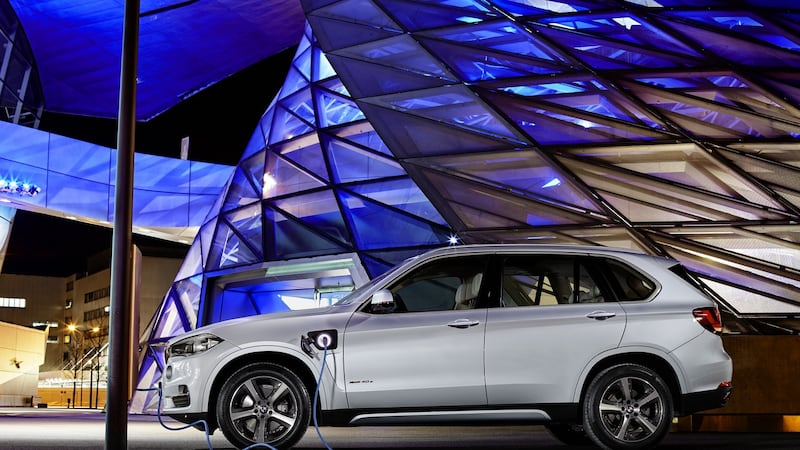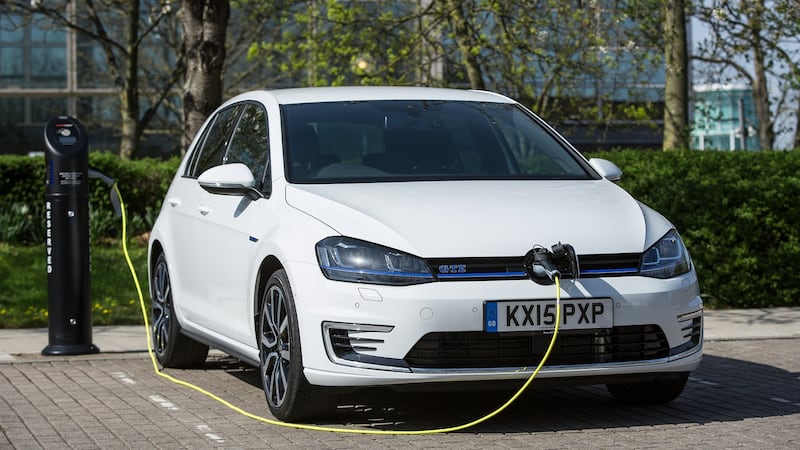These days, we talk about cars and eco-friendly cars, but soon we will just talk about cars.
Cars which used to be set up to be economical were specially crafted and individually named. Remember all the fuss about “lean burn”? Well, now they’re all like that. And so it will be with electric power.
Right now, electric cars and even plugin hybrids are the alien inventions, the ones with odd styling or far-out names.


That won’t last and starting in 2016 such cars are going to become more and more mainstream. They will be far more economical. They will go further on a single charge of their batteries. Will they be any fun though?
Right now, in terms of pure electric cars, your choices are limited. You can have a Nissan Leaf, a Volkswagen e-Golf, a BMW i3, a Renault Zoe or you can put together a serious amount of cash and get a Tesla.
Well, you can try and get a Tesla but such is the demand for the products of the famed California-based company that the waiting list is pretty long.
The opening of a European factory in the Netherlands in 2016 won’t help much, as that will just be putting together kits sent over from California. Irish buyers wanting to get a Model S, the forthcoming gullwing-doored Model X SUV or the haven’t-seen-it-yet Model 3 compact saloon will have to get used to holding their breath.
There are improvements coming to the existing electric car fleet though. The Nissan Leaf has just been given the option of a bigger 30kWh battery that apparently boosts its range from 160km to a far more robust 250km, a figure that makes it much more of a realistic purchase for many more potential buyers.
BMW is also working on a battery range boost for the i3 (both for the pure-electric version and the range-extender with its dinky two-cylinder petrol engine) which should see its one-charge range climbing to close to 200km.
Neither the e-Golf or the Zoe is due for any major upgrades as yet in 2016, but we would be surprised if they didn’t get a few tweaks.
Mind you, VW will have its hands full launching its GTE models, both in the Golf and Passat. These use the 150hp turbo petrol engine combined with a plugin battery stack and an electric motor for 200hp GTI-style performance with 50km battery-only range and 49g/km emissions.
As a way of sidestepping the recent diesel emissions scandal, these are pretty persuasive models and they are fun to drive.
Plugin hybrids
Speaking of plugins and speaking of fun to drive, BMW is plotting a whole line-up of plugin hybrids with small cylinder counts and low emissions.
We saw a quick introduction to the 225e and 330e, both of which should become a production reality during 2016.
The 225e MPV uses the same 1.5-litre petrol three-pot and electric motor combo as the i8 supercar, although detuned just a tad for family duties. The 330e uses BMW’s sweet 2.0-litre four-cylinder turbo and both will go for around 45km on one charge of the batteries.
A 530e version of next year’s new 5 Series waits in the wings, although we probably won’t see that in 2016. The X5 eDrive, which will be on sale, represents a sweet way to get your electric kicks in a hulking SUV shape that will delightfully confuse the green brigade.
That also goes for Audi’s Q7 e-Tron, which packs a big-engine punch with claimed fuel economy of better than 150mpg. Hard to replicate in the real world? True, but then aren’t any claimed car industry figures?
Best of the lot might just be Volvo’s XC90 T8 twin-engine plugin hybrid, which is big, handsome and comfy. It also has a great interior and its hybrid setup seems to work well.
However, these are only for the wealthiest of eco-conscious drivers: an X5 40e will set you back €73,000, the Audi Q7 e-Tron €84,000 and the Volvo €81,000. Or you could save yourself about €40,000 and get the recently updated €41,000 Mitsubishi Outlander PHEV plugin hybrid, which does all the stuff the big boys do but with less boasting and significantly lower costs. And it got there first.
Toyota’s Prius has never exactly been a byword for fun and frolics behind the wheel, but a new version is always big news in the eco-car world, and this fourth generation gets a controversial new body (ugly? ugly-pretty? ) and a 70g/km hybrid drivetrain.
You may never match its claimed 94mpg on the road, but it's smoother and more pleasant to drive than the outgoing Prius. It's just a shame we can't also have the distantly related Mirai hydrogen fuel cell car, which is proper Captain Kirk in its tech levels, but no one in Ireland has yet thought to put in an actual hydrogen filling station, so it's something of a moot point. But at least Toyota will bring its new RAV4 hybrid to these shores.
Old-fashioned battery
Speaking of Toyota,
Lexus
will launch its new RX450h in the coming weeks, but seeing as it’s sticking with an old-fashioned nickel-metal battery stack, for the first time ever that model is going to be behind the curve when it comes to SUV technology. Will it have tricks up its sleeve to keep it abreast of the best of the rest? We’ll find out soon.
Mercedes will also be pushing the plugin button hard during 2016, with plugin versions of the S-Class, the GLE SUV and the C-Class all going on sale. There will also be a plugin version of the all-new E-Class, which arrives in 2016, but which will probably be a 2017 car.
Coming down the price scale, Suzuki will be launching a new "mild hybrid" setup for its new engine range. It adds a small electric motor and a hefty alternator to the new 1.0-litre turbo three-cylinder petrol engine which boosts power, makes for a better stop-start system and saves a crucial few g/km on the CO2 emissions cycle.
Not massively ground-breaking, but more affordable than anything else we’ve been talking about here.
Every car from every car maker coming in the next 12 months will have some sort of hybrid element or assistance.
Whether it’s the new 48-volt electrical systems being introduced which give even conventional petrol and diesel cars a frisson of hybrid punch or the increasing plethora of plugin hybrid modules that slot into existing cars, the fact is that, pretty soon, every car will be in some way electrically assisted.
We’ll all be queuing up and hanging on for that new Tesla Model 3, but the fact is that that formerly wildly optimistic promise of making sure that 10 per cent of Ireland’s new cars are electric by 2020 is looking just a bit pessimistic.
Supercars
And as for fun? Well, how about the battle of the hybrid supercars? We’ve already seen the likes of the McLaren P1, La
Ferrari
and Porsche 918, but these are all cars that cost the thick end of €1 million once you’ve added a few toys.
In 2016, we’ll see two hybrid supercars that don’t cost the Earth in either sense, one new, one familiar.
Honda will finally launch its new NSX which uses a turbocharged 3.5-litre V6 engine with electric motors, one for the rear wheels and two for the front ones. Its combined output is north of 550hp, which is short of Ferrari standards but then so was the original NSX in 1991, and a power deficit never held that car back.
Meanwhile, BMW is prepping a big upgrade for its glorious i8 plugin hybrid supercar. It’s targeting 500hp, with a boost to 300hp for its mid-mounted 1.5-litre turbo engine plus more grunt from a bigger electric motor.
We’ve probably never been so excited about the arrival of two new hybrid cars, and we hope that excitement is emblematic of what we can expect as we move further into the electric car revolution.









